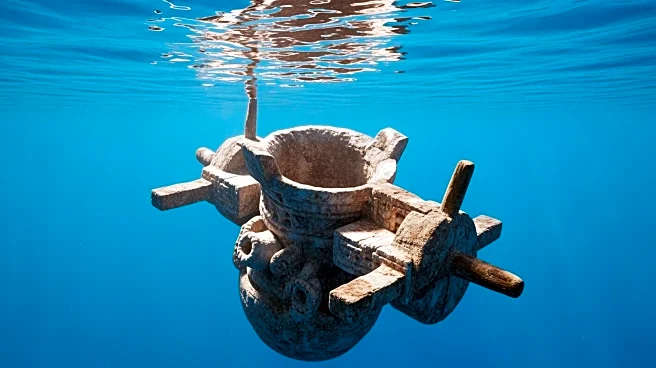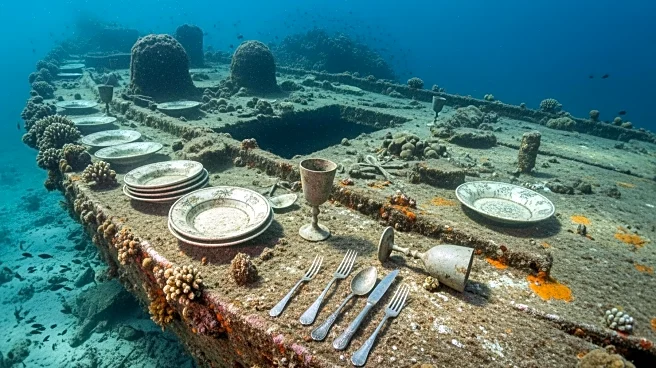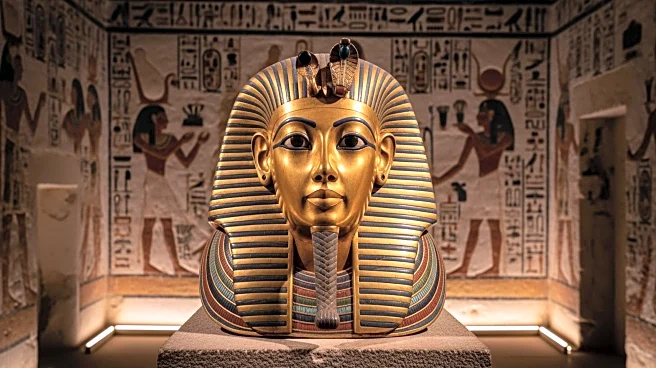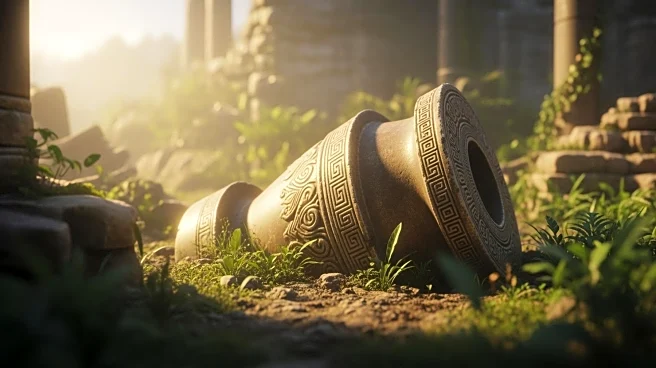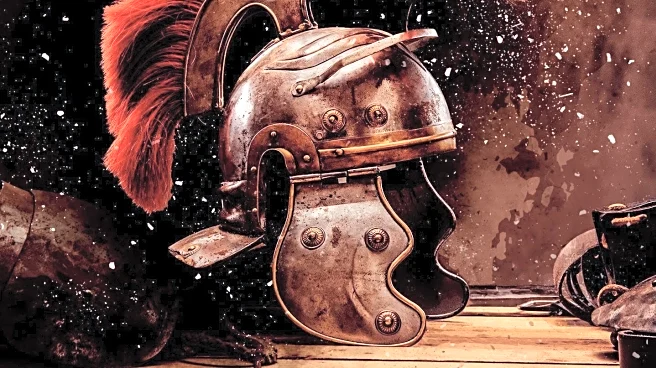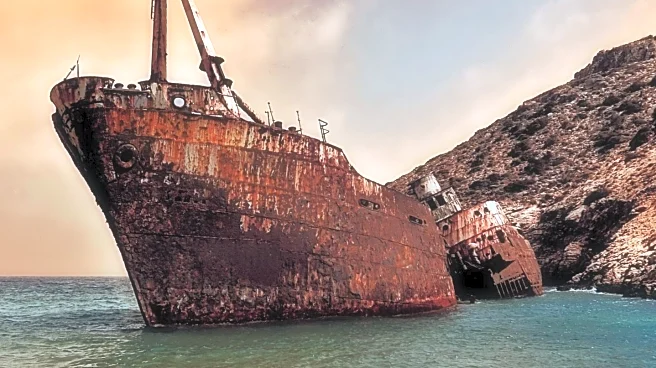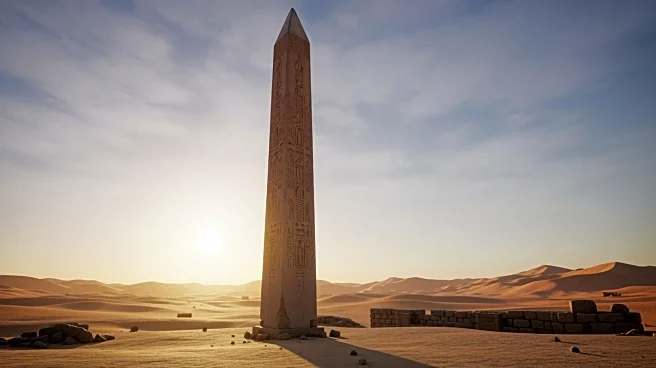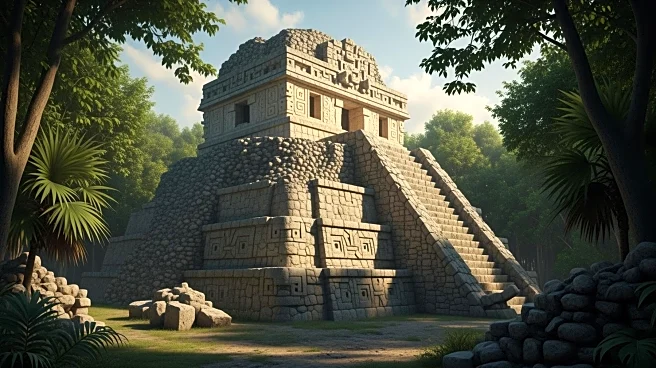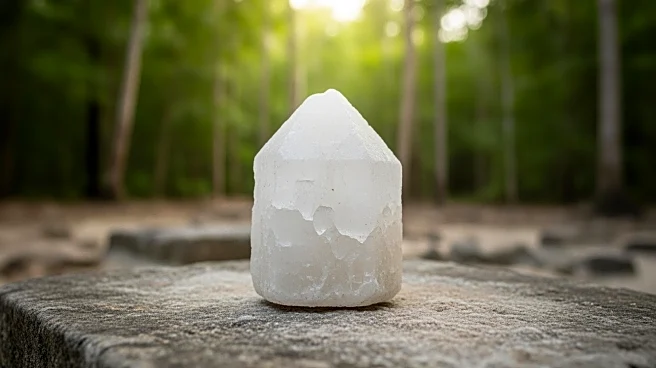What's Happening?
A team of archaeologists led by Dr. Heather McKillop and Dr. E. Cory Sills has uncovered a Late Classic Maya residential compound preserved underwater in the Punta Ycacos Lagoon, Belize. The site, known as Cho-ok Ayin, features wooden posts and structures
that have been remarkably preserved due to the anaerobic conditions created by mangrove peat deposits. The compound includes four buildings, with two identified as salt kitchens, highlighting the site's specialization in salt production. This discovery provides new insights into Maya architecture and trade practices, as the inhabitants engaged in regional trade networks despite their pole-and-thatch architecture.
Why It's Important?
The discovery of Cho-ok Ayin offers a unique glimpse into the daily lives and economic activities of the Maya civilization, particularly in salt production. The preservation of wooden structures is rare and provides valuable information about construction techniques and materials used by the Maya. This finding challenges conventional archaeological methods that often overlook sites without stone architecture, potentially leading to a reevaluation of population estimates and economic activities in ancient Maya communities. The research underscores the importance of exploring 'invisible sites' to gain a comprehensive understanding of historical societies.
What's Next?
Further analysis of the Cho-ok Ayin site may reveal additional details about Maya salt production techniques and trade networks. Archaeologists might continue to explore other submerged sites in the region to uncover more 'invisible' Maya settlements. The findings could prompt a reassessment of archaeological survey methods, encouraging the use of technologies that can detect non-stone structures. Additionally, the research may inspire similar studies in other regions, potentially uncovering new aspects of ancient civilizations.
Beyond the Headlines
The preservation of the Cho-ok Ayin site highlights the impact of environmental conditions on archaeological discoveries. The anaerobic environment created by mangrove peat deposits offers a unique opportunity to study organic materials that are typically lost to decomposition. This discovery may lead to increased interest in underwater archaeology and the exploration of submerged landscapes, potentially uncovering more sites that have been preserved in similar conditions.
